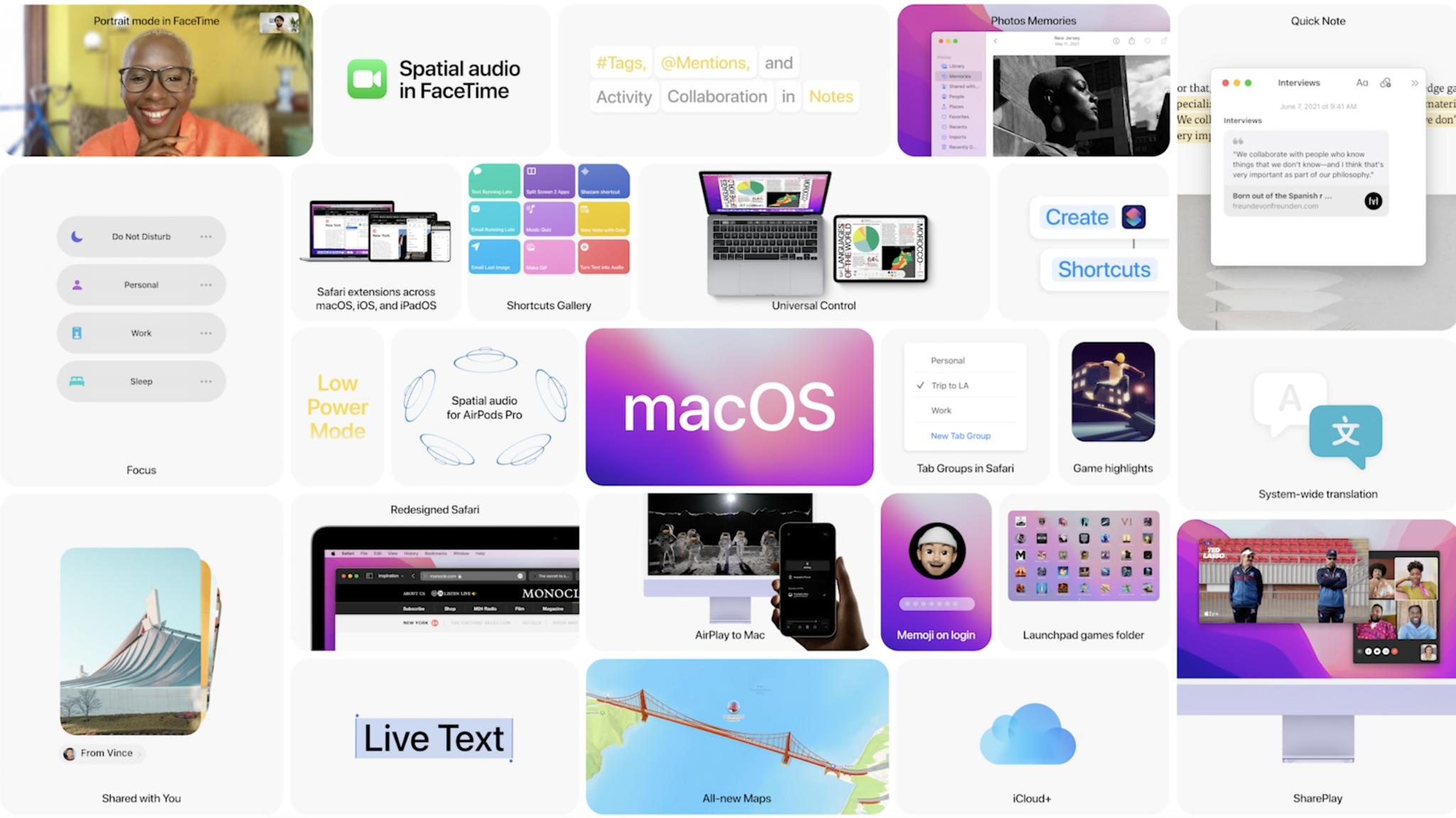Apple's poor macOS Monterey messaging meant it missed a chance to upsell M1

Apple announced macOS Monterey during its WWDC opening keynote this week. But its messaging could have been better. Let me explain.
When Apple announced the next version of its Mac operating system it spent a good few minutes taking us through everything that we can look forward to. And there's a lot because macOS Monterey looks like a pretty great update, all things considered. Tons of people are going to be able to install it, too. Some Macs going all the way back to 2013 will be compatible with macOS Monterey, all the way up to the very latest M1 Macs that are causing such a stir. But it's those M1 Macs that will get the very best out of this release – and not just in terms of performance.
As we found out yesterday, not all macOS Monterey features will not be available to those on Intel Macs. Portrait Mode in FaceTime, some Maps features, and on-device dictation are all out and that's just the start. The missing features can be blamed on Intel chips and their lack of a Neural Engine in some cases. In others, it's just a case of good old-fashioned performance – Apple is only confident that its M1 Macs can handle features like the high resolution, detailed all-new city maps experience it showed off on Monday.
The reasons for the features going walkabout on Intel Macs isn't really important here. It's the messaging. Or lack of it.
We all found out that Intel Macs were getting left behind two days after macOS Monterey was announced. Why? Because it was hidden at the bottom of the update's preview page on apple.com.
I think Apple missed a trick here. Because we all found out about the Intel situation ourselves, and because Apple buried it the way it did, the stories wrote themselves. But what if Apple had made a point out of the M1 Macs getting the full feature set? What if Apple had someone stand on its virtual stage and say "because M1 is so powerful, and thanks to its Neural Engine, we were able to take macOS Monterey a step further on new Macs." What if someone had rolled out the red carpet, shown the new features off on a bright orange M1 iMac, and pointed out just why the M1 is so great?
The whole message would be different. Then, the M1 would be the hero of the piece, flexing its muscle to go above and beyond. Now, it's the villain as it rips features from Intel's cold, dead hands.
Master your iPhone in minutes
iMore offers spot-on advice and guidance from our team of experts, with decades of Apple device experience to lean on. Learn more with iMore!
It's all about the messaging.

If this sounds familiar, it's because it is. Apple had a problem with messaging just a few weeks ago when it announced Apple Music was getting lossless audio. It didn't make clear exactly what would and wouldn't get the new high-quality music and it was a similar story with Spatial Audio and Dolby Atmos support, too. That led Apple to publish a support document explaining the situation a week later.
Why wasn't that support document ready to go on day one? Apple is often so great at controlling the message that it's so glaringly obvious when it gets it wrong. Now, it's gotten it wrong twice in a matter of weeks.
I know for a fact that Apple has some very talented writers on staff. It's time it made better use of them.

Oliver Haslam has written about Apple and the wider technology business for more than a decade with bylines on How-To Geek, PC Mag, iDownloadBlog, and many more. He has also been published in print for Macworld, including cover stories. At iMore, Oliver is involved in daily news coverage and, not being short of opinions, has been known to 'explain' those thoughts in more detail, too. Having grown up using PCs and spending far too much money on graphics card and flashy RAM, Oliver switched to the Mac with a G5 iMac and hasn't looked back. Since then he's seen the growth of the smartphone world, backed by iPhone, and new product categories come and go. Current expertise includes iOS, macOS, streaming services, and pretty much anything that has a battery or plugs into a wall. Oliver also covers mobile gaming for iMore, with Apple Arcade a particular focus. He's been gaming since the Atari 2600 days and still struggles to comprehend the fact he can play console quality titles on his pocket computer.
